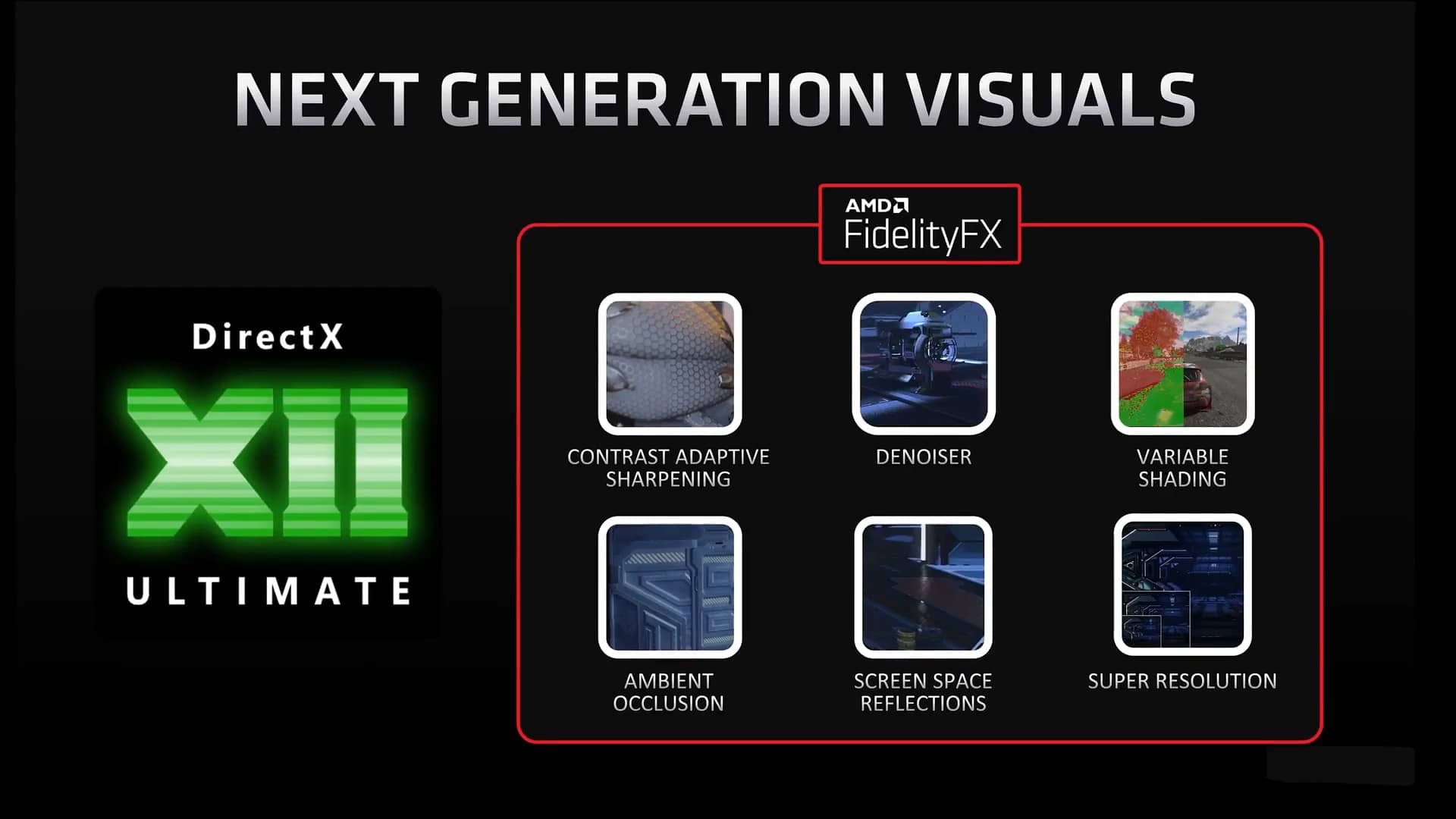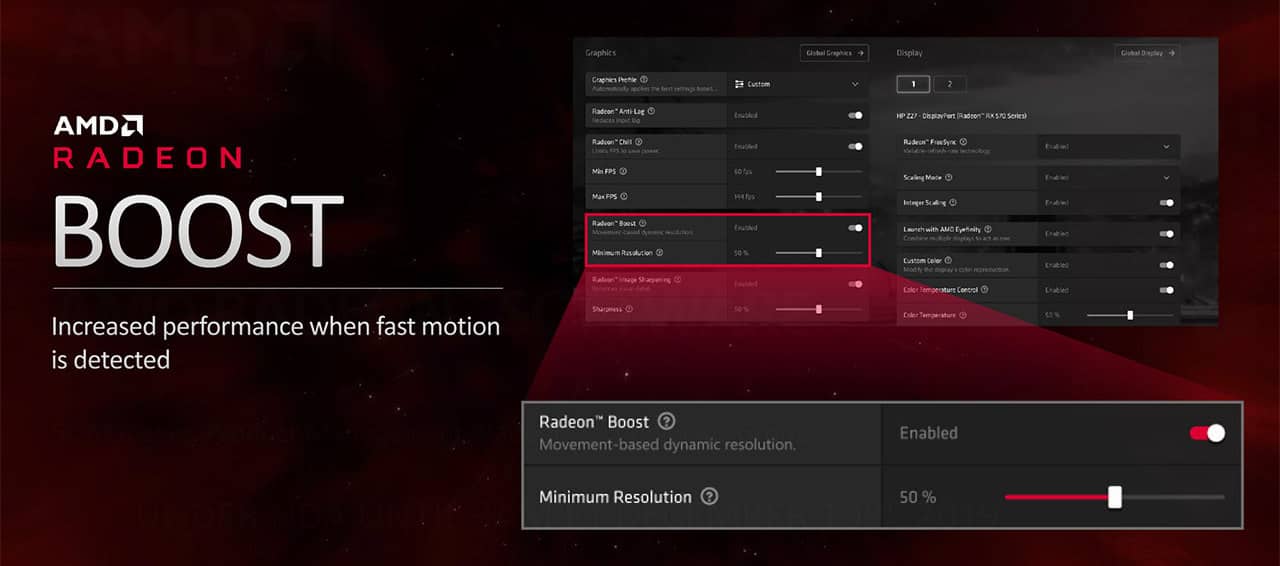DLSS-like technology could be part of the next major AMD driver update
Radeon graphics cards currently have one disadvantage: they do not support Nvidia’s DLSS AI upscaling technology, which significantly increases FPS in exchange for some (hopefully slight) quality loss. AMD announced development of its own alternative when RX 6000 cards lanched, but it was not clear how long it would take. It may come relatively soon, as a big driver update is coming in the spring and “AMDLSS” could be part of it.
This information was brought by a Hungarian web Prohardver. They say that AMD should allegedly be preparing a major driver update for this spring. You might remember that in previous years, the company would always releas a special driver release at the end of the year, which included larger-scale innovations beyond the updates and additions usual in ordinary driver updates. The last time this happened was the Adrenalin Edition 2020 version at the end of 2019. It brought a new GUI, installer and also the Radeon Boost feature.
At the end of 2020, we were watching for AMD to release a similar update again, but this time, surprisingly, nothing came. According to Prohardver, this is likely because this update was simply posponed for later time. The bigger spring update that is now coming is likely going to be precisely this the postponed “superdriver” that didn’t appear in December. If so, it would make sense for it to bring some significant additions.
According to Prohardver, the main features of this driver update are new capabilities for the aforementioned Radeon Boost feature and also FidelityFX SR (Super Resolution). The latter should be AMD’s AI upscaling resembling DLSS. Today, upscaling with FidelityFX uses only simple scaling algoritm with extra sharpening post-processing. However, these new drivers could include some improvements to the upscaling component.
The interpolation should now be built on the basis of a neural network, just as with DLSS; it would likely run on top of DirectML API. On Radeons, such an algorithm will not be able to use the special high-performance tensor core accelerators that Nvidia’s GPUs have, so AMD will have to be more conservative with use of computing power. Only shaders and their support for reduced-precision FP16, INT8 and INT4 compute will be available for powering the AI, so the neural network will have to be less complex than the one used in DLSS/DLSS 2.0.

Prohardver does not provide any further details on what this FidelityFX Super Resolution feature is supposed to be like. So for now, you should probably be careful with expectations. It also can’t be ruled aout that the development will take a longer time, and AMD will merely show some preview this spring, while you’ll need to wait more this feature will be ready for use in games.
According to Prohardver, the implementation of this upscaling could likely be a feature integrated in specific games, so it will probably only be possible to use it when such games comes out. The new driver could only provide general support for using this upscaling technology based on the DirectML, but the implementation itself will be a responsibility of the actual games. Only a framework for game developers may be released this spring and we may need to wait some time before it sees real usage.

Changes in Radeon Boost?
The Hungarian web’s information is less vague about the Radeon Boost feature. This feature currently also uses upscaling, but in its case it is more similar to what we call dynamic resolution on consoles – Boost reduces the real resolution used in rendering according to how much movement happens in the displayed scene, because it can be assumed that human the eye does not notice a reduction in quality in fast motion. The lower-res rendering is then upscaled to the monitor’s native resolution.
What should be different in the upcoming update is granularity. Currently Boost reduces the resolution globally for the whole image. However, AMD is said to be preparing an improvement, with which it will be possible to degrade the resolution of only a part of the scene, ideally the one that is moving fast. But, for example, a weapon shown in the foreground in first person shooter games (which remains motionless in the middle and therefore makes it easy for you to notice resolution downgrade) could remain in full resolution so that the effects of resolution switching are not visible. This sounds pretty interesting. It may reduce the performance gains Boost gives a bit, but improving the perceived quality you could be worth it.

In order for this to be feasible, the principle of operation of the Boost feature will reportedly have to be changed. Prohardver says that instead of reducing the rendering resolution and then upscaling, AMD may use the Variable Rate Shading functionality from DirectX 12 Ultimate – which would mean that only the resolution of the used shaders will be reduced (for example, they would work with 2×2 pixels instead of a single pixel), while the rasterization resolution itself would not change. We’ll see how well this will works, but one downside is clear: this will require support for Variable Rate Shading, so it can only be used on graphics cards with RDNA 2 architecture, like the Radeon RX 6000 cards.
The exact release date is still unclear
It looks like the big update to Radeon Software’s drivers could be quite interesting, if Prohardver’s report is true. But it’s not said when exactly we can expect this driver overhaul, so it’s hard to say whether we are talking about as soon as March, or more like May or June.
Translated, original text by:
Jan Olšan, editor for Cnews.cz











